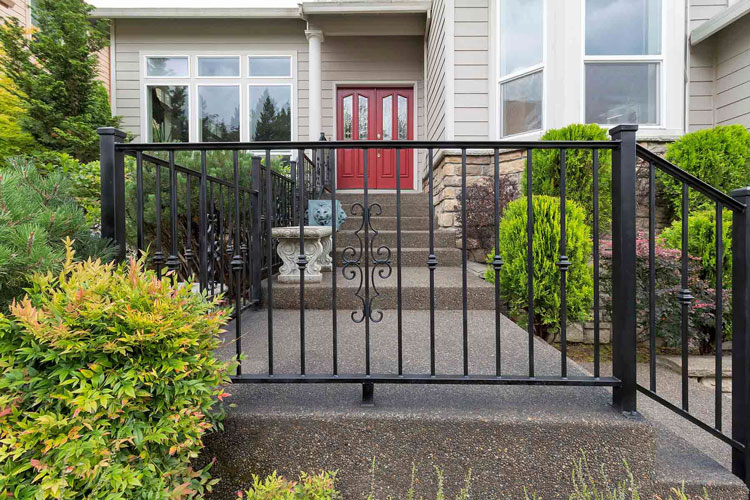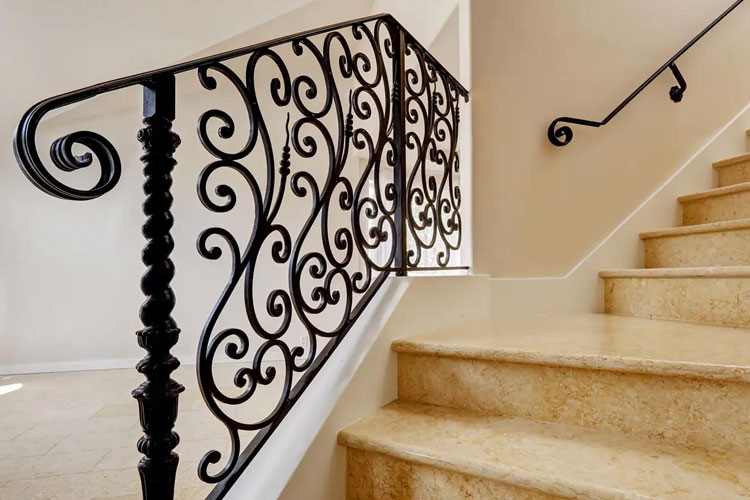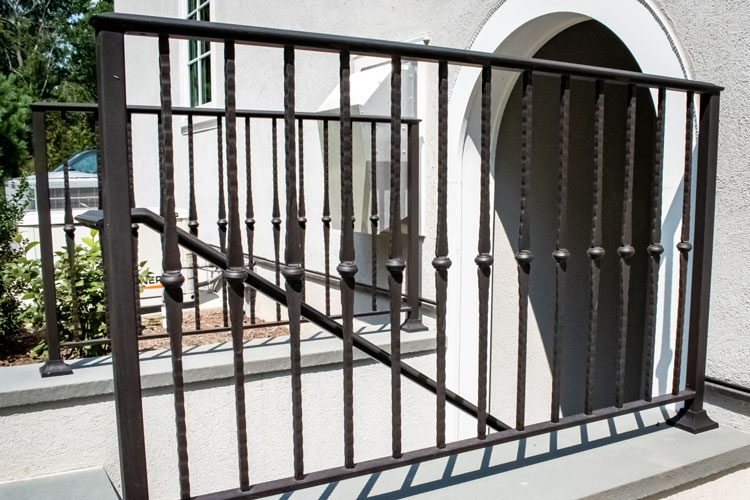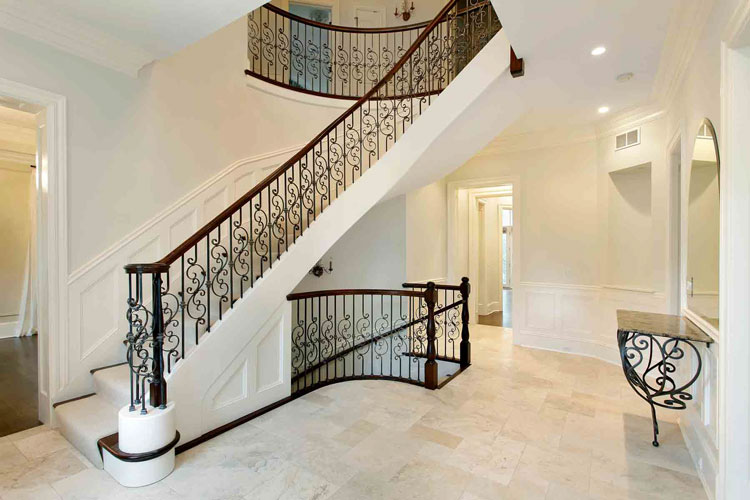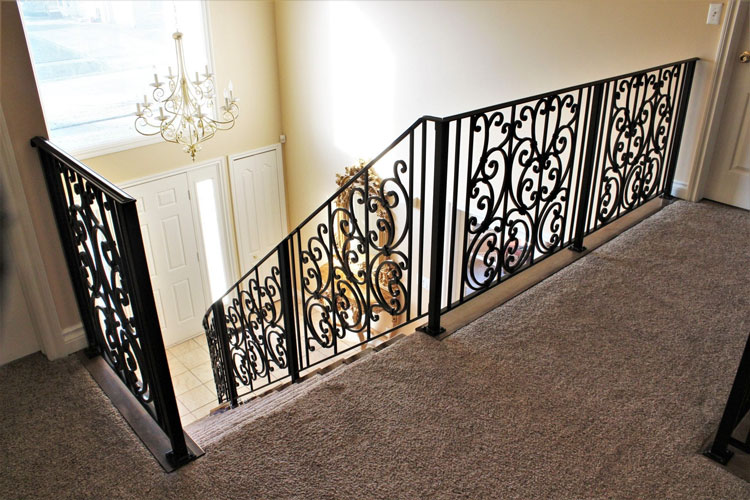IRON RAILING SYSTEMS, PRICE
- HOME
- IRON RAILING SYSTEMS
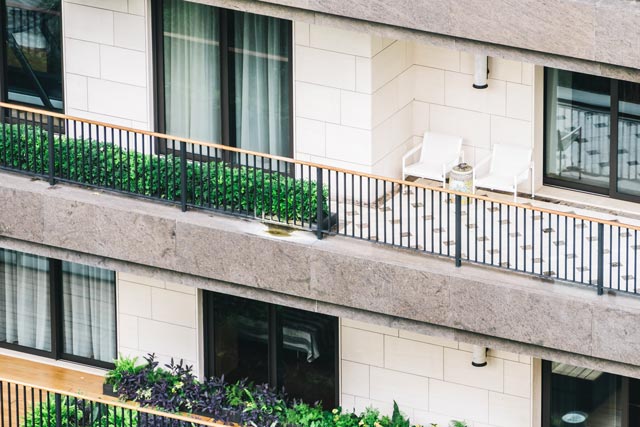
IRON RAILING
Iron railing refers to railing systems primarily constructed with iron components, offering a classic and enduring design. Iron has been a staple material in the construction of railings for centuries, admired for its strength, versatility, and timeless appeal.
KEY FEATURES OF IRON RAILING
- Handrail:
- The horizontal rail at the top of the railing system that provides a surface to hold onto for support.
- Iron handrails can be designed in various shapes and profiles, contributing to the traditional or ornamental look.
- Balusters (Spindles):
- Vertical posts or rods that connect the handrail and the base rail.
- Iron balusters come in different styles, from simple and straight to ornate and decorative, allowing for customization based on design preferences.
- Base Rail:
- The lower horizontal rail running parallel to the handrail, providing additional support and connecting the balusters.
- Newel Posts:
- Vertical posts located at the starting and ending points of a railing section. Newel posts serve as anchor points for the railing and add structural stability.
CHARACTERISTICS OF IRON RAILING
- Timeless Aesthetics:
- Iron railings are known for their timeless and elegant design. They seamlessly blend with various architectural styles, from traditional to contemporary.
- Strength and Durability:
- Iron is a robust material, offering exceptional strength and durability. Iron railings can withstand harsh weather conditions and remain structurally sound over time.
- Versatility:
- Iron railings can be crafted into a variety of designs, allowing for versatility in appearance. They are suitable for both simple and ornate styles, catering to different aesthetic preferences.
- Customization:
- Iron railings offer a high level of customization. The balusters and handrails can be designed with intricate patterns, twists, scrolls, or left simple for a clean and classic look.
- Indoor and Outdoor Use:
- Iron railings are commonly used indoors for staircases and balconies, as well as outdoors for decks, porches, and garden areas. Their durability makes them well-suited for exterior applications.
- Easy Maintenance:
- While iron railings may require periodic maintenance to prevent rust, they are relatively easy to care for. Regular painting or coating with protective finishes helps maintain their appearance.
- Security:
- Iron railings provide a sense of security due to their sturdy construction. They act as effective barriers, especially in elevated areas, preventing accidental falls.
- Historical Significance:
- Iron railings have been used in architecture for centuries, contributing to their historical significance. This timeless appeal makes them a popular choice for those seeking a classic and enduring design.

